Kiwifruit
by Hugh Campbell and Julia Haggerty 作者:休·坎贝尔和朱莉娅·哈格蒂
Kiwifruit have been grown in New Zealand since the early 1900s – the first seeds were brought from China by a visiting school headmistress. She couldn’t have guessed how popular the unassuming-looking berry was to become. Today, kiwifruit are the country’s highest-earning horticultural crop and a marketing success story.
自20世纪初以来,新西兰就种植了猕猴桃——第一批种子是由一位到访的学校女校长从中国带来的。她无法想象这种看起来不起眼的浆果会变得多么受欢迎。如今,猕猴桃是该国收入最高的园艺作物,也是一个营销成功的故事。
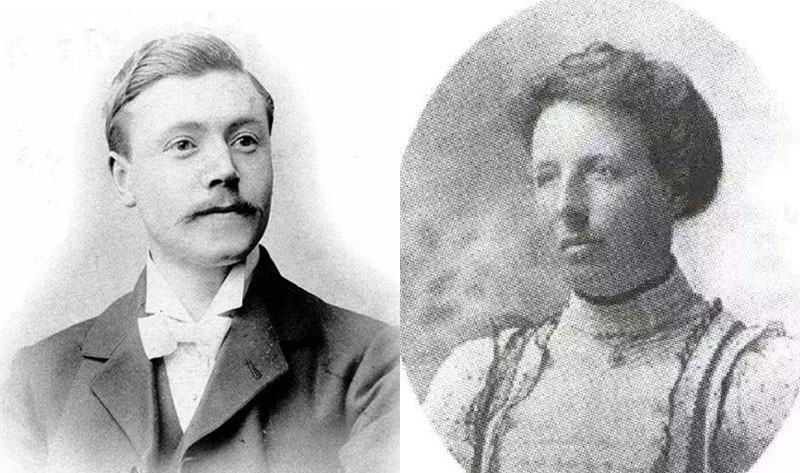
(左为威尔逊,右为把猕猴桃种子带往新西兰的女教师伊莎贝尔)
The hairy berry
Brown and fuzzy on the outside, a kiwifruit has to be opened to be appreciated – its bright green or gold flesh is attractive and sweet.
毛茸茸的浆果
奇异果外表呈棕色,毛茸茸的,必须打开才能欣赏——它明亮的绿色或金色果肉既诱人又甜美。

(威尔逊发现的中国醋栗,它现在更为熟知的名字是:猕猴桃)
The kiwifruit plant
Kiwifruit is the fruit of Actinidia deliciosa, a plant originally from China. A vigorous, deciduous vine, it grows to a height of 20 metres. It has large, round leaves 7–12 centimetres in diameter, and bears male and female flowers on separate plants. Male and female plants must grow close together for fruit to form. The fruit is an oblong berry, about the size of a large egg, with coarse brown skin densely covered in fuzzy hairs. Inside, bright green flesh speckled with tiny black seeds surrounds a white core.
猕猴桃植物
猕猴桃是原产于中国的美味猕猴桃的果实。它是一种生命力旺盛的落叶藤蔓植物,能长到20米高。它有直径7-12厘米的大而圆的叶子,在不同的植物上开雄花和雌花。雄性和雌性植物必须靠得很近才能结出果实。果实是一种长方形浆果,大约有一个大鸡蛋那么大,粗糙的棕色皮肤上密被毛茸茸的毛发。内部,亮绿色的果肉上点缀着黑色的小种子,环绕着白色的核心。

▲野生猕猴桃
Vine longevity
Kiwifruit vines planted in New Zealand in the 1930s were still producing fruit in 2008. In Korea, one plant of a related vine, the arguta kiwifruit (Actinidia arguta), is reputed to be 600 years old.
藤蔓寿命
20世纪30年代在新西兰种植的猕猴桃藤在2008年仍在结果。在韩国,有一种相关藤蔓植物,即arguta猕猴桃(Actinidia arguta),据说已有600年的历史。

▲绿心猕猴桃
Eating kiwifruit
Kiwifruit is most often eaten fresh, although it can be made into juice, purées and preserves, and is used as an ingredient in cooking. The ripe fruit has a slightly acid tang, a bit like a gooseberry. Most New Zealanders consider kiwifruit-topped pavlova to be a national dish.
吃猕猴桃
猕猴桃最常新鲜食用,尽管它可以制成果汁、果泥和蜜饯,并被用作烹饪的原料。成熟的水果有点酸味,有点像醋栗。大多数新西兰人认为猕猴桃配巴甫洛娃是一道国菜。

Highest-earning fruit crop
Kiwifruit has been grown in New Zealand since the early 1900s, but became an important export crop only after the Second World War. The industry boomed in the 1970s but crashed in the late 1980s and early 1990s, when competing countries entered the market. However, with improved production techniques and close attention to environmental issues, along with aggressive marketing, New Zealand’s kiwifruit industry has bounced back. In 2006, kiwifruit was New Zealand’s highest-earning horticultural crop, accounting for 30% of horticultural export earnings.
收入最高的水果作物
新西兰自20世纪初开始种植猕猴桃,但直到第二次世界大战后才成为重要的出口作物。该行业在20世纪70年代蓬勃发展,但在20世纪80年代末和90年代初崩溃,当时竞争对手进入了市场。然而,随着生产技术的改进和对环境问题的密切关注,以及积极的营销,新西兰的猕猴桃产业已经反弹。2006年,猕猴桃是新西兰收入最高的园艺作物,占园艺出口收入的30%。

Early history, names and varieties
Introduction to New Zealand
Kiwifruit seeds first arrived in New Zealand in 1904, brought back from China by Wanganui Girls' College headmistress Isabel Fraser, who had been visiting her missionary sister. She gave the seeds to Alexander Allison, a Whanganui farmer with an interest in unusual plants.
早期历史、名称和品种
新西兰简介
Kiwifruit种子于1904年首次抵达新西兰,由Wanganui女子学院女校长Isabel Fraser从中国带回,当时她正在探望她的传教士妹妹。她把种子送给了亚历山大·艾利森,一位对不同寻常的植物感兴趣的旺格努伊农民。
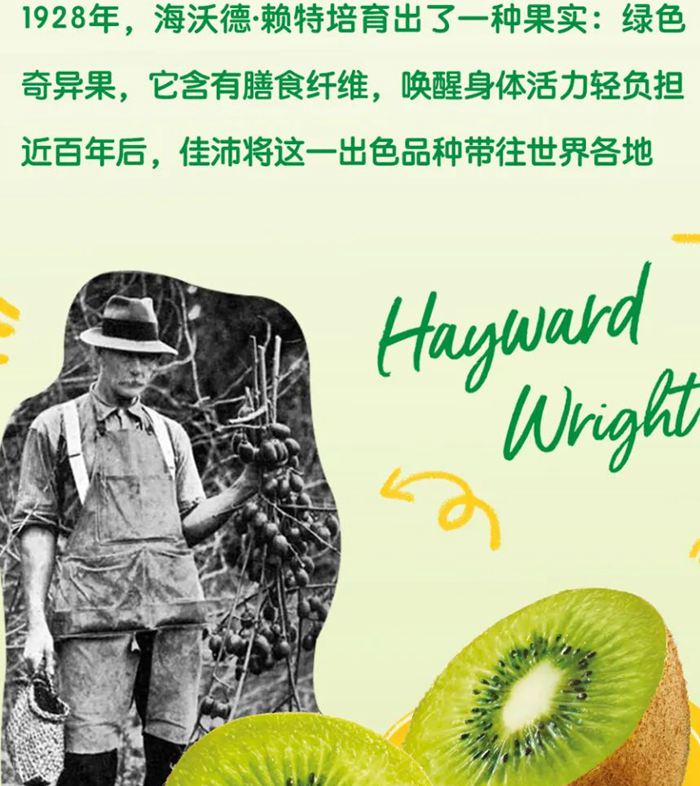
▲Hayward Wright上世纪二十年代选育的海沃德品种依然在很多国家种植
Chinese gooseberry
Alexander Allison is credited with growing the first plants of Chinese gooseberry, as kiwifruit was originally known in New Zealand. Its fruit attracted the interest of a number of nurserymen, and by the 1920s plants were being sold at several nurseries. Chinese gooseberries became increasingly popular in the 1930s and 1940s, but remained a novelty crop grown in private gardens and for local markets.
猕猴桃
亚历山大·艾利森(Alexander Allison)种植了第一批猕猴桃,猕猴桃最初在新西兰被称为猕猴桃。它的果实引起了许多苗圃的兴趣,到20世纪20年代,几家苗圃都在出售这种植物。中国醋栗在20世纪30年代和40年代越来越受欢迎,但仍然是一种在私人花园和当地市场种植的新奇作物。

▲奇异果&奇异鸟,是不是长得很像,因为果型绒毛酷似新西兰国鸟奇异鸟,于是中国的毛桃傍上了国字号,有了洋气的名子:奇异果。
Strange names
In China, kiwifruit has several colloquial names, including monkey peach, macaque pear, vine pear, sun peach and wood berry. Recently, the name strange fruit, an apparent transliteration of the word kiwifruit, has become common in Taiwan and Hong Kong.
奇怪的名字
在中国,猕猴桃有几个俗称,包括猴桃、猕猴、藤梨、太阳桃和木莓。最近,奇异果这个名字在台湾和香港变得很常见,它显然是猕猴桃的音译。
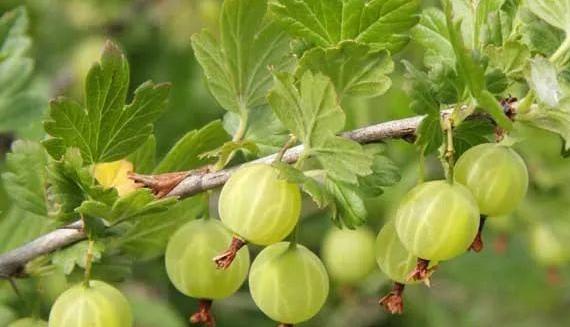
(醋栗本是一种生长在印尼、菲律宾、巴西等热带地区的水果,洋人发明了“中国醋栗”来命名猕猴桃)
Hayward’s cultivar
Early horticulturalists selected Chinese gooseberry plants grown from the original seed. Most notable was Auckland nurseryman Hayward Wright, whose vines grew large fruit that kept well and had an excellent flavour. These plants were propagated by grafting and eventually became the preferred cultivated variety (cultivar) for both growers and consumers. In 1956 the cultivar was named Hayward as a tribute. By the late 1960s it was the standard cultivar of the kiwifruit export trade.
海沃德品种
早期的园艺家选择了从原始种子生长的中国醋栗植物。最著名的是奥克兰的苗圃主海沃德-赖特,他的葡萄藤结出了大果实,保存良好,味道极佳。这些植物通过嫁接繁殖,最终成为种植者和消费者的首选栽培品种(栽培品种)。1956年,该品种被命名为Hayward作为贡品。到20世纪60年代末,它已成为猕猴桃出口贸易的标准品种。
▲海沃德
Name changes
The name Chinese gooseberry was changed to melonette, then kiwifruit in 1959 by Auckland fruit-packing company Turner & Growers. Kiwifruit soon became the standard name in horticultural circles. Some countries shorten the name to kiwi.
名称更改
1959年,奥克兰水果包装公司Turner&Growers将中国醋栗的名字改为甜瓜,然后是猕猴桃。猕猴桃很快成为园艺界的标准名称。一些国家将名字缩写为kiwi。
The green-fleshed kiwifruit was originally given the scientific name Actinidia chinensis, but after an examination of plants in China, botanists renamed it A. deliciosa in 1984. The name A. chinensis was reserved for yellow-fleshed kiwifruit.
这种绿色果肉的猕猴桃最初被命名为中华猕猴桃,但在对中国植物进行研究后,植物学家于1984年将其更名为美味猕猴桃。A.chinensis这个名字是为黄肉猕猴桃保留的。

▲这就是中国种植面积最大的中华系猕猴桃品质红阳猕猴桃
Gold kiwifruit
In the late 1970s, seeds of A. chinensis were imported to breed new types of kiwifruit. Experiments produced a favourite, ‘Hort16A’, named for its position in the research orchard and the organisation which developed it (HortResearch). In 2000, the cultivar was launched on the worldwide market by Zespri, New Zealand’s kiwifruit marketing company, under the trade name Zespri Gold. The smooth-skinned, yellow-fleshed fruit tasted sweet, with overtones of mango – qualities that have been the key to new Asian markets.
金果
20世纪70年代末,中国猕猴桃种子被引进以培育新型猕猴桃。实验产生了一个最受欢迎的“Hort16A”,以它在研究果园中的地位和开发它的组织(HortResearch)命名。2000年,新西兰猕猴桃营销公司Zespri以商品名Zespri Gold向全球市场推出了该品种。这种果皮光滑、果肉黄色的水果尝起来很甜,带有芒果的味道——这些品质一直是开拓亚洲新市场的关键。

▲园艺16A品种,也叫黄金奇异果
The introduction of gold-fleshed kiwifruit has been a turning point in the industry’s history. It is likely that other, perhaps more competitive, cultivars may be developed, and another breed, Actinidia arguta, has been introduced commercially.
金肉猕猴桃的引入是该行业历史上的一个转折点。很可能会开发出其他更具竞争力的品种,另一个品种——软枣猕猴桃已经商业化引进。

▲zespri sungold golden kiwi
Growing kiwifruit
Location
In New Zealand in 2022, 14,700 hectares was planted in kiwifruit. By far the greatest concentration of orchards was in Bay of Plenty, especially near Te Puke. There were smaller concentrations in the Northland, Auckland, Gisborne and Nelson regions.
种植猕猴桃
地点
2022年,新西兰种植了14700公顷猕猴桃。到目前为止,果园最集中的地方是丰盛湾,尤其是特普克附近。北国、奥克兰、吉斯伯恩和纳尔逊地区的浓度较小。

▲新西兰猕猴桃种植区域
Growing requirements
Kiwifruit vines are fairly hardy and grow in a wide range of temperatures, but to produce satisfactory fruit they need:
well-drained, fertile soils
shelter from the wind
adequate moisture year-round
protection from autumn and spring frosts.
不断增长的需求
猕猴桃藤相当耐寒,可以在各种温度下生长,但要生产出令人满意的果实,它们需要:
排水良好、肥沃的土壤
避风处
全年湿度充足
防止秋季和春季霜冻。
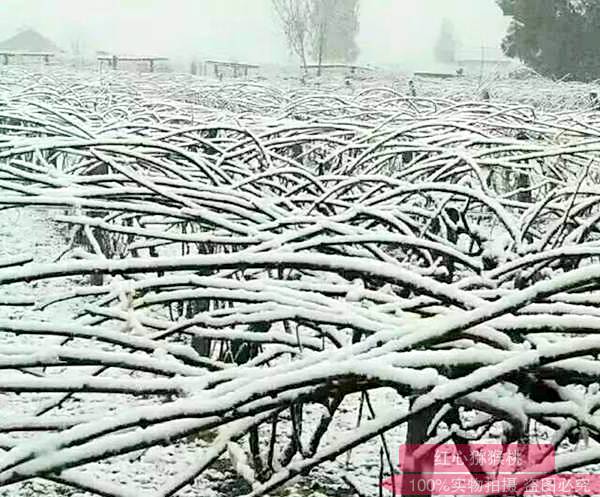
▲猕猴桃藤
Soils
The deep, yellow-brown loams of Bay of Plenty are well-drained, but need regular nitrogen, phosphorus and potassium once the vines begin cropping. Orchards are usually fertilised in spring and early summer with 200 kilograms of nitrogen, 55 kilograms of phosphorus and 100–150 kilograms of potassium per hectare.
土壤
丰盛湾的深黄褐色壤土排水良好,但一旦葡萄开始种植,就需要定期的氮、磷和钾。果园通常在春季和初夏施肥,每公顷施用200公斤氮、55公斤磷和100-150公斤钾。
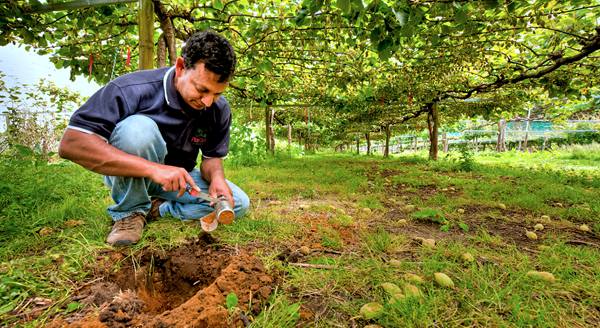
▲新西兰丰盛湾种植猕猴桃的土壤
Shelter
Wind is a major limiting factor in establishing a kiwifruit orchard and growing high-quality fruit. Young and flowering shoots are easily damaged, and most orchards need protection from New Zealand’s persistent winds. In the 1970s and 1980s growers planted shelter belts of fast-growing trees, but increasingly they are building artificial windbreaks using polythene fabric.
庇护所
风是建立猕猴桃园和种植优质水果的主要限制因素。幼枝和开花的枝条很容易受损,大多数果园需要保护,以抵御新西兰持续的风。在20世纪70年代和80年代,种植者种植了速生树木的防护带,但他们越来越多地使用聚乙烯织物建造人工防风林。

▲zespri sungold golden kiwi
Irrigation
On the drier East Coast, where annual rainfall is less than 1,000 millimetres, kiwifruit orchards need irrigation in summer. Elsewhere, young vines usually benefit from irrigation.
灌溉
在年降雨量不足1000毫米的干燥东海岸,猕猴桃园在夏季需要灌溉。在其他地方,年轻的葡萄藤通常受益于灌溉。

▲New Zealand's newly built Sunshine Golden Fruit Orchard
Frost protection
In winter, kiwifruit vines are leafless and dormant, and can withstand frosts to -10°C. But in spring and autumn, plants are vulnerable to frost damage. Growers use water sprinklers and wind machines to protect their crop if frosts are forecast.
防冻保护
冬天,猕猴桃藤是无叶的,处于休眠状态,可以承受-10°C的霜冻。但在春季和秋季,植物容易受到霜冻的破坏。如果预报有霜冻,种植者会使用喷水器和风力机来保护他们的作物。

▲New Zealand's newly built Sunshine Golden Fruit Orchard
The orchard
Kiwifruit is grown in orchards that are almost exclusively devoted to the one fruit. This differs from other countries, where kiwifruit is grown along with a number of other fruits.
果园
猕猴桃种植在几乎只种植一种水果的果园里。这与其他国家不同,在这些国家,猕猴桃与许多其他水果一起种植。

▲zespri kiwifruit sungold
The average New Zealand orchard is small compared with overseas competitors. In 2006, there were 3,077 kiwifruit growers registered with Zespri. Two-thirds had orchards smaller than 5 hectares.
与海外竞争对手相比,新西兰果园的平均面积很小。2006年,有3077名猕猴桃种植者在Zespri注册。其中三分之二的果园面积小于5公顷。

▲新建的黄心猕猴桃果园
Support structures
Vines are grown and trained on supports – either a pergola or T-bar – both of which were designed in New Zealand, but have been adopted as the global industry standard. Vines need to be pruned, otherwise they become a tangle of unproductive, leafy shoots.
支撑结构
葡萄藤在支撑物上生长和训练——无论是藤架还是T型杆——这两种支撑物都是在新西兰设计的,但已被采纳为全球行业标准。葡萄树需要修剪,否则它们会变成一团生产力低下、枝繁叶茂的枝条。

▲New Zealand's newly built Sunshine Golden Fruit Orchard
Planting layout
The vines are planted out in rows some 3–5 metres apart, depending on the type of support, and with a spacing of 5–6 metres between plants in a row. To ensure pollination, male plants are distributed through the orchard, with male to female plant ratios around 1:5.
种植布局
根据支撑类型,葡萄藤成排种植,间距约为3-5米,一排植物之间的间距为5-6米。为了确保授粉,雄性植物在果园中分布,雄性与雌性植物的比例约为1:5。

▲猕猴桃藤
Pests
Kiwifruit arrived in New Zealand without any of its associated pests, and for the first decades of its cultivation was virtually pest-free. But as the area of vines increased, leafroller caterpillars, scale insects and mites began to attack. Various species of leafroller feed on the leaves and scar the fruit, with the brownheaded leafroller (Ctenopseustis obliquana) the most common. Greedy scale insect (Hemiberlesia rapax) sucks the sap of young plants and can infest the fruit. Kiwifruit with signs of greedy scale are not accepted for export.
害虫
猕猴桃在抵达新西兰时没有任何相关害虫,在种植的头几十年里几乎没有害虫。但随着葡萄藤面积的增加,卷叶虫、蚧虫和螨虫开始攻击。各种类型的卷叶蛾以叶子为食,并在果实上留下疤痕,其中褐头卷叶蛾(Ctenopseustis obliquana)最为常见。贪婪的蚧虫(Hemiberlesia rapax)会吸取幼苗的汁液,并可能侵染果实。有贪婪规模迹象的猕猴桃不被接受出口。

▲New Zealand's newly built Sunshine Golden Fruit Orchard
Diseases
Root rots can develop from infection by Phytophthora soil fungi, especially on poorly drained sites. The native bootlace fungus Armillaria novaezelandiae spreads to kiwifruit from infected dead tree stumps or buried wood and causes fatal infections. In humid climates, grey mould Botrytis cinerea rot infects flowers and young fruit.
The bacterium Pseudomonas syringae pv. actinidiae (Psa) arrived in New Zealand on Chinese kiwifruit pollen. First discovered in local vines in November 2010, it had a widespread and severe impact on the local industry, costing several hundred farmers hundreds of millions of dollars.

▲新西兰阳光金果
疾病
根腐病可能是由疫霉土壤真菌感染引起的,特别是在排水不良的地方。当地的鞋带真菌Armillaria novaezelandiae从受感染的死树桩或埋藏的木头传播到猕猴桃上,并导致致命的感染。在潮湿的气候条件下,灰霉病灰霉病会感染花朵和幼果。
丁香假单胞菌。猕猴桃科(Psa)以中国猕猴桃花粉抵达新西兰。它于2010年11月首次在当地葡萄藤中发现,对当地产业产生了广泛而严重的影响,使数百名农民损失了数亿美元。
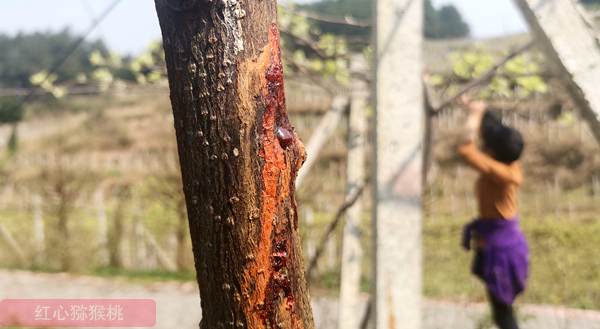
The production year
The growing season
The kiwifruit year starts after the previous season’s harvest, when the vines drop their leaves and enter winter dormancy. Growers prune fruited and surplus canes. Dormancy lasts until late August, when buds begin to swell. Budbreak, shoot growth and flowering occur in spring. The timing and extent of these depends on how cold winter was – chillier winters usually lead to more profuse flowering. However, prolonged freezing temperatures in winter, and spring and autumn frosts, can harm kiwifruit production.
生产年份
生长季节
猕猴桃年在上一季收获后开始,此时葡萄藤落叶并进入冬季休眠。种植者修剪水果和多余的藤条。休眠期持续到8月下旬,此时芽开始膨胀。芽萌发、芽生长和开花发生在春季。这些的时间和程度取决于冬季的寒冷程度——寒冷的冬季通常会导致更多的开花。然而,冬季长时间的冰冻温度以及春秋两季的霜冻会损害猕猴桃的生产。

▲新西兰奇异果
Pollination and fruiting
In early summer, flowers are pollinated and thinned. Kiwifruit are not self-pollinating, so part of each orchard must be devoted to male vines unless pollen is brought in for artificial pollination. Unlike most other fruits, kiwifruit need high levels of pollination (about 13,000 pollen grains per stigma compared to only 12 grains for apple flowers). Growers either place numerous honey-bee hives in the orchards temporarily, or artificially pollinate the flowers.
授粉和结果
初夏,花朵授粉并变薄。猕猴桃不是自花授粉的,因此每个果园的一部分必须专门用于雄性葡萄藤,除非引入花粉进行人工授粉。与大多数其他水果不同,猕猴桃需要高水平的授粉(每个柱头约13000个花粉粒,而苹果花只有12个花粉粒)。种植者要么在果园里临时放置许多蜜蜂蜂箱,要么人工为花朵授粉。

▲Kiwi pollination by honey bee
Wild weeds
As well as being New Zealand’s most important horticultural crop, kiwifruit has also become one of its problem weeds. Silvereye birds feed on ripe fruit and spread the seed to bush margins, where the vines grow and smother stands of native bush. Most wild kiwifruit is in the Bay of Plenty, but it has also been found in Canterbury and south Westland – quite distant from kiwifruit orchards.
Throughout summer the main tasks are to remove damaged or misshapen fruit, prune excessive vine growth to maintain fruit health, and control pests and diseases.
野草
猕猴桃不仅是新西兰最重要的园艺作物,也成为新西兰的问题杂草之一。银眼鸟以成熟的果实为食,将种子传播到灌木丛边缘,藤蔓在那里生长,窒息了当地灌木丛。大多数野生猕猴桃都在丰盛湾,但在坎特伯雷和西南部也有发现,这些地方离猕猴桃园很远。
整个夏天的主要任务是清除受损或畸形的水果,修剪过度的藤蔓以保持水果健康,控制病虫害。

Harvesting
Historically, kiwifruit harvesting was timed using a Brix test to determine the amount of sugar in the fruit. Orchardists now also use dry matter and colour tests to ensure harvested fruit has the desired eating qualities. Most fruit is picked in May. Since the mid-1990s, fruit from some early-maturing orchards has been picked for early shipments under the KiwiStart programme.
Fruit is picked by hand and put into bags, which when full are emptied into large wooden bins.
收割
从历史上看,猕猴桃的收获是通过白利糖度测试来确定水果中的糖含量。果园主现在也使用干物质和颜色测试来确保收获的水果具有所需的食用品质。大多数水果在5月采摘。自20世纪90年代中期以来,根据KiwiStart计划,一些早熟果园的水果已被采摘并提前发货。
水果是用手摘的,放进袋子里,装满后倒进大木箱里。

Exports
The first exports of Chinese gooseberries were in 1952–53, from a few orchards in Te Puke, Bay of Plenty. Growers sent trial shipments to the UK and Australia, where the fruit was well received. Early exporters learned by trial and error the complexities of growing, harvesting, sorting, packing and storing a tender fruit for faraway markets.
The overseas demand for kiwifruit grew steadily in the 1950s and 1960s. During this period, kiwifruit producers intensified their use of chemical pesticides, adopted industrial production techniques such as mechanical sorting of fruit, and built large cool stores to hold the fruit ready for export.
出口
1952年至1953年,中国首次从丰盛湾特普克的几个果园出口醋栗。种植者向英国和澳大利亚发送了试销货物,在那里水果受到了好评。早期的出口商通过反复试验了解了为遥远市场种植、收获、分类、包装和储存嫩水果的复杂性。

▲这期间,弗里达·卡普兰女士在美国销售奇异果营销策略,推动猕猴桃销售屡创新高。
Reefer ships
Kiwifruit is exported in reefers (refrigerated ships) rather than in refrigerated containers. 1984 was the first year that exporters chartered entire ships for their produce. Since then, Tauranga has become the dispatch port for most kiwifruit exports, which means that the bulk of growers – those in the Bay of Plenty – do not have to transport their fruit long distances in refrigerated trucks to get it to port.
冷藏船
猕猴桃是用冷藏箱(冷藏船)而不是冷藏集装箱出口的。1984年是出口商为其产品包租整艘船的第一年。自那时起,陶朗加已成为大多数猕猴桃出口的发货港口,这意味着大部分种植者——丰盛湾的种植者——不必用冷藏卡车长途运输水果才能到达港口。

▲这期间,弗里达·卡普兰女士在美国销售奇异果营销策略,推动猕猴桃销售屡创新高。
Rise and fall
In the late 1970s kiwifruit was hailed as a ‘golden harvest’ because of the industry’s explosive growth. Financial success and the appeal of the orchardist’s lifestyle attracted investors and new growers, and kiwifruit-growing expanded to new areas such as Northland and Hawke’s Bay.
However, unstable interest rates and exchange rates and increased world supplies of kiwifruit led to an industry crisis between 1987 and 1989. Some growers felt bitter that overseas growers were raising kiwifruit from plant stock originally exported from New Zealand – ironically, kiwifruit promoters had created their own competition.
In a tough world market, many exporters competed to sell kiwifruit, driving down the price of the New Zealand fruit. Growers responded by lobbying government to regulate the export sector.

▲Golden kiwifruit after artificial pollination
上升与下降
20世纪70年代末,猕猴桃因其行业的爆炸性增长而被誉为“黄金收成”。经济上的成功和果园主生活方式的吸引力吸引了投资者和新的种植者,猕猴桃种植也扩展到了北国和霍克湾等新地区。
然而,不稳定的利率和汇率以及世界猕猴桃供应的增加导致了1987年至1989年间的行业危机。一些种植者对海外种植者从最初从新西兰出口的植物原料中种植猕猴桃感到痛苦——具有讽刺意味的是,猕猴桃推广商创造了自己的竞争对手。
在艰难的世界市场中,许多出口商竞相销售猕猴桃,压低了新西兰水果的价格。种植者的回应是游说政府监管出口部门。

▲新西兰佳沛奇异果
Kiwifruit Marketing Board
The New Zealand Kiwifruit Marketing Board was established in 1988 and had monopoly powers to distribute and market kiwifruit everywhere except Australia. In 2000 it adopted the corporate identity Zespri International Ltd.
猕猴桃营销委员会
新西兰猕猴桃营销委员会成立于1988年,拥有在除澳大利亚以外的任何地方分销和销售猕猴桃的垄断权。2000年采用Zespri International有限公司的企业标识。

▲新西兰奇异果园
Overseas growers
So that it could supply kiwifruit year-round, Zespri began to represent some northern-hemisphere growers and gave them rights to grow gold kiwifruit. The Hayward cultivar is produced to Zespri standards by some Italian growers.
海外种植者
为了全年供应猕猴桃,Zespri开始代表一些北半球种植者,并授予他们种植金猕猴桃的权利。Hayward品种是由一些意大利种植者按照Zespri标准生产的。

▲New Zealand Kiwi Orchard
KiwiGreen pest management
The problem of chemical residues
Just as the New Zealand kiwifruit industry was regrouping after the global overproduction crisis of the 1980s, a more severe price crash occurred when European kiwifruit began to enter the market around 1991. It was getting harder to sell to key European markets; in particular, Italian officials prosecuted New Zealand exporters for selling kiwifruit with high chemical residues.
Kiwi绿色害虫管理
化学残留物问题
就在20世纪80年代全球生产过剩危机后新西兰猕猴桃产业重组之际,1991年左右欧洲猕猴桃开始进入市场时,发生了更严重的价格暴跌。向欧洲主要市场销售变得越来越困难;特别是,意大利官员起诉新西兰出口商销售化学残留量高的猕猴桃。

▲New Zealand Kiwi Orchard
Kiwifruit growers had traditionally sprayed pests (specifically leafroller and scale insects) by the calendar. To meet early export requirements, orchards had to be inspected and declared free of pests and diseases. Before 1992, up to eight insecticide applications were sprayed each season, compared with only one in hot areas such as Chile and California.
猕猴桃种植者传统上按日历喷洒害虫(特别是卷叶虫和蚧虫)。为了满足早期的出口要求,必须对果园进行检查,并宣布没有病虫害。1992年之前,每个季节最多喷洒八种杀虫剂,而智利和加利福尼亚等炎热地区只有一种。

▲New Zealand Kiwi Orchard
The KiwiGreen programme
Prosecution prompted the New Zealand industry to set up an integrated pest-management system. By 1997, all kiwifruit was produced according to KiwiGreen or certified organic protocols, where biocontrol methods are favoured, and chemical sprays are used only when there are high numbers of pests. The KiwiGreen programme also considers environmental factors, sustainability, ethical trading practices and hygiene standards.
KiwiGreen计划
起诉促使新西兰工业建立了一个综合虫害管理系统。到1997年,所有猕猴桃都是按照KiwiGreen或认证的有机协议生产的,在这些协议中,生物防治方法受到青睐,只有在害虫数量较多时才使用化学喷雾。KiwiGreen计划还考虑了环境因素、可持续性、道德贸易惯例和卫生标准。

▲Golden Kiwi Orchard
Acknowledgements to Jayson Benge, Bob Martin and Ross Ferguson 感谢Jayson Benge、Bob Martin和Ross Ferguson



评论